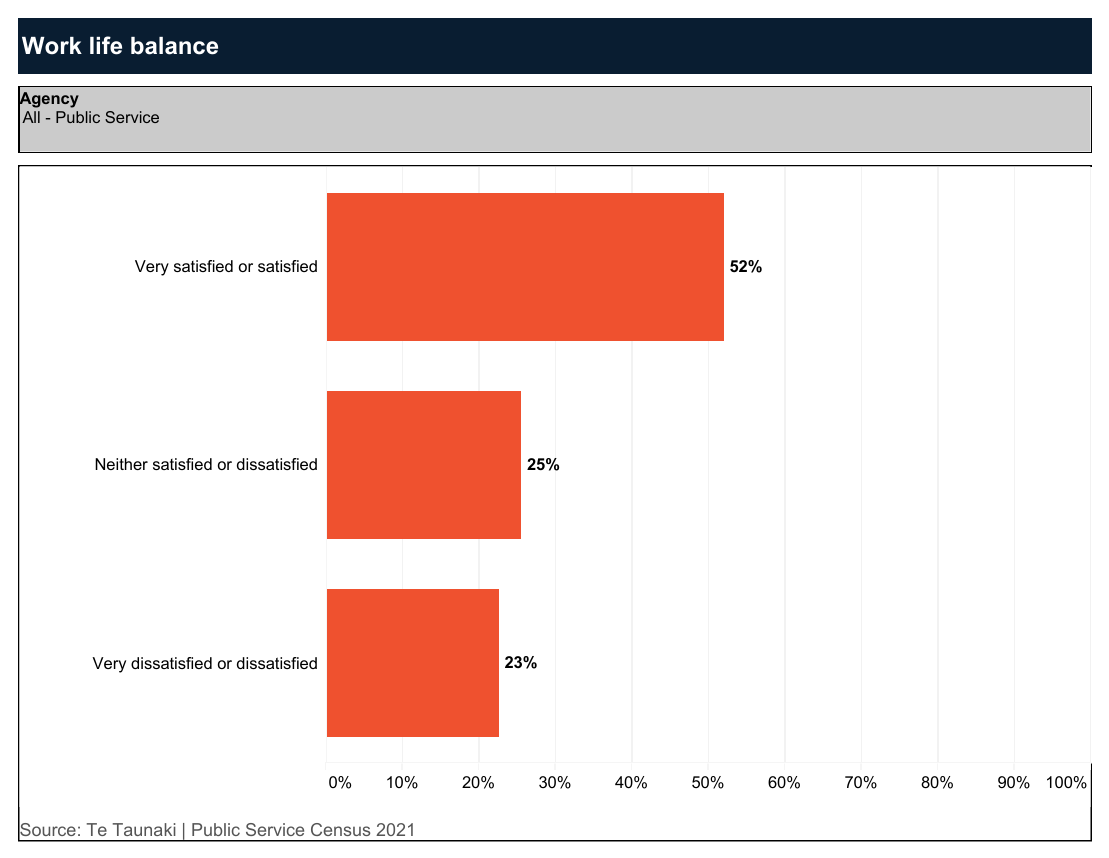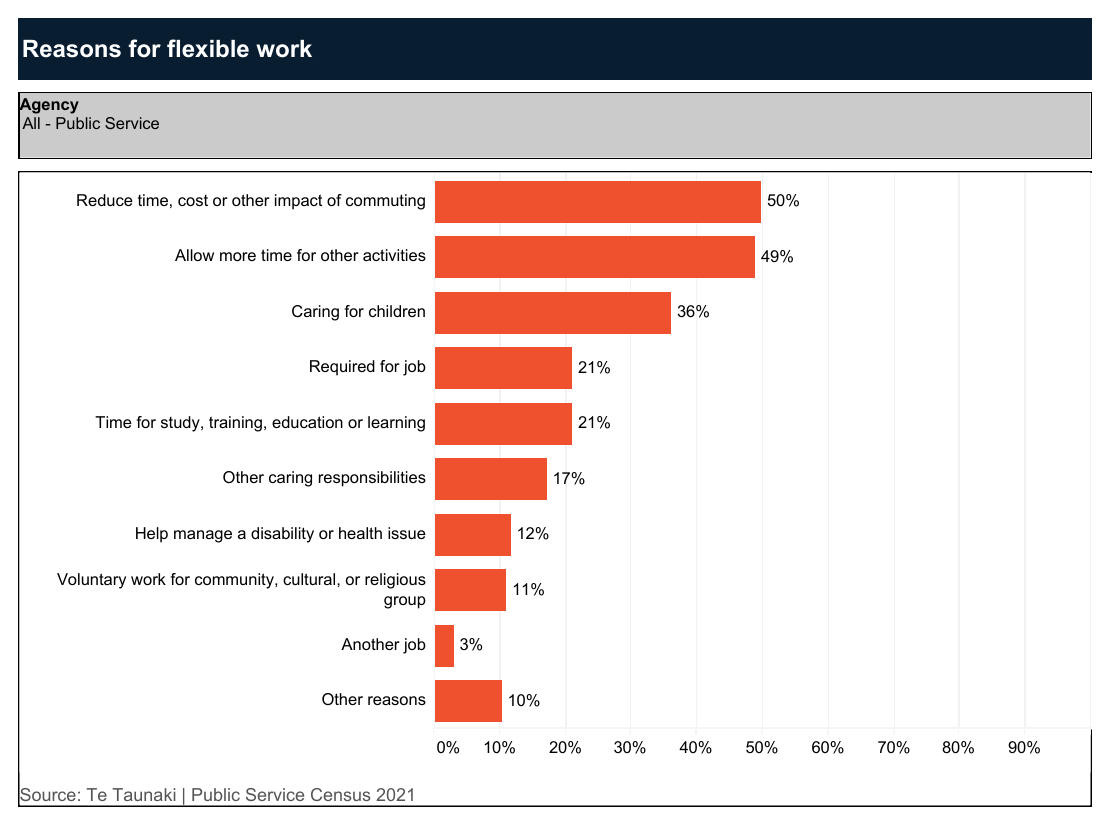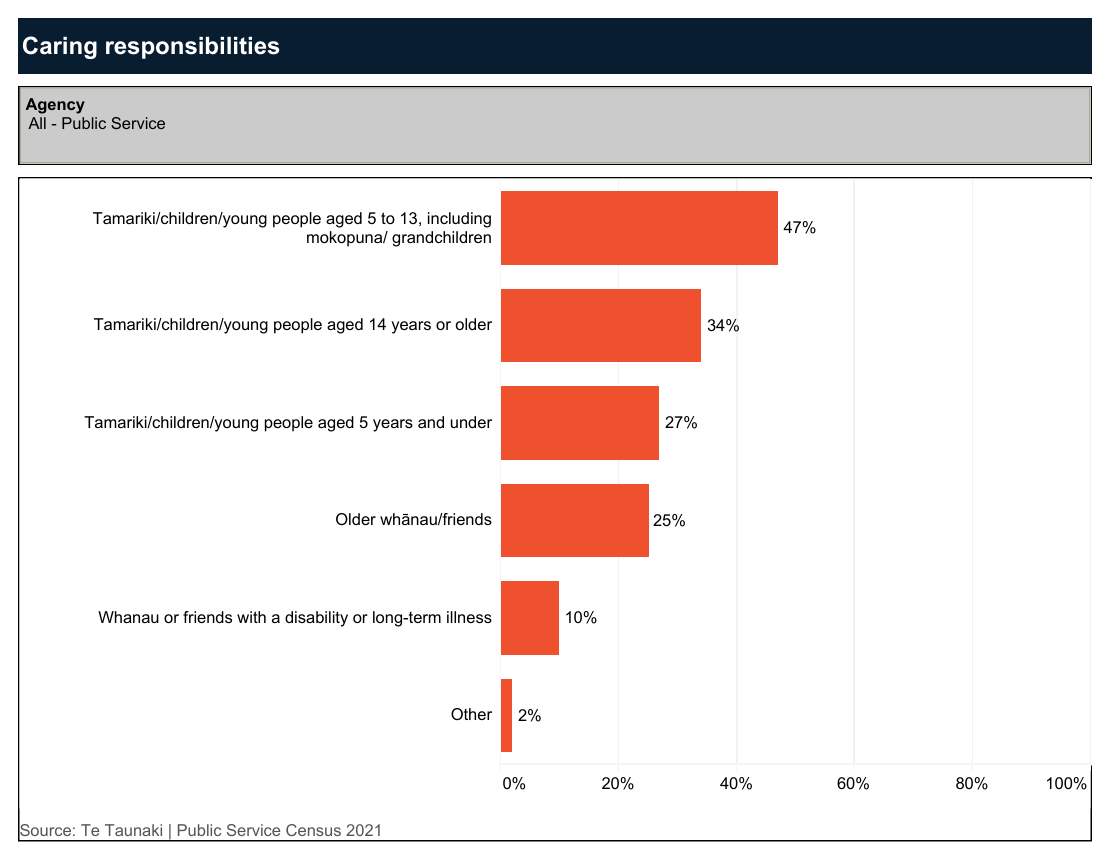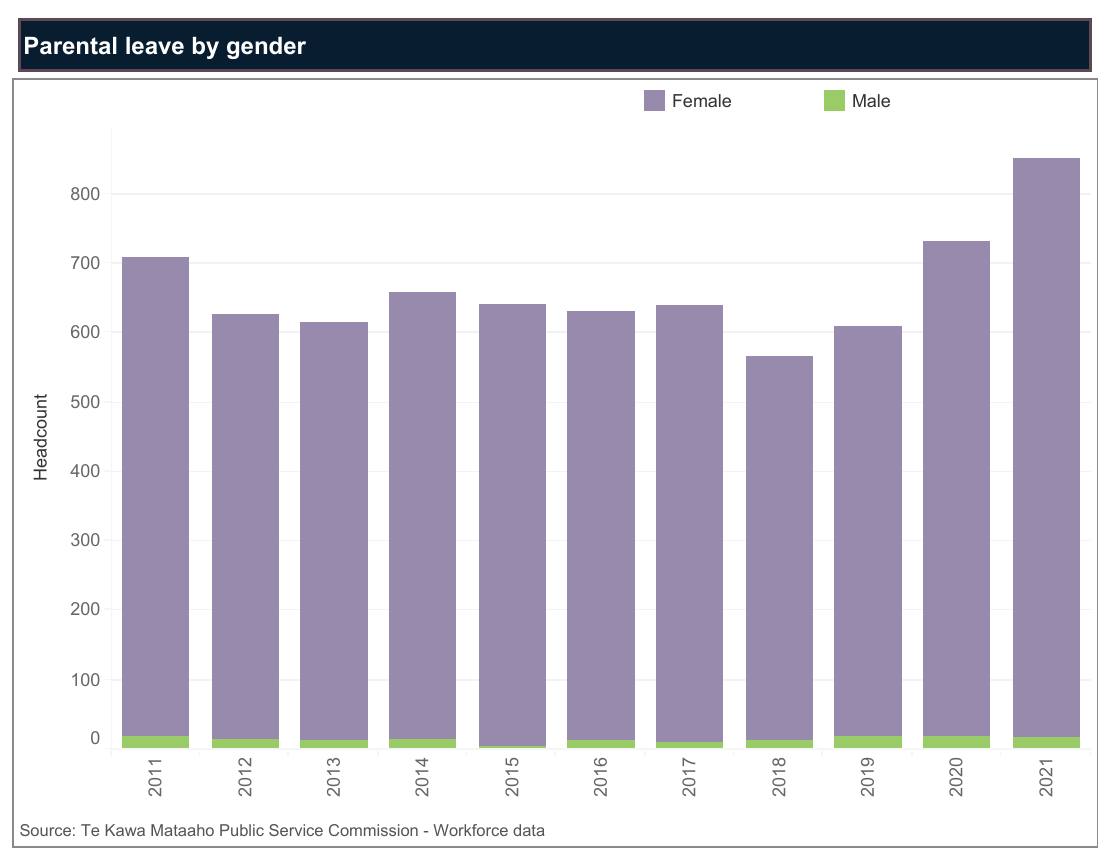-
Section 01
Workforce Data — Senior leadership 2021
-
Section 02
Workforce Data — Remuneration/pay 2021
-
Section 03
Workforce Data — Māori Crown 2021
-
Section 04
Workforce Data — Public sector composition 2021
-
Section 05
Workforce Data — Diversity and inclusion 2021
-
5.1
Workforce Data — Ethnicity in the Public Service 2021
-
5.2
Workforce Data — Gender representation in the Public Service 2021
-
5.3
Workforce Data — Rainbow 2021
-
5.4
Workforce Data — Disability 2021
-
5.5
Workforce Data — Age profile 2021
-
5.6
Workforce Data — Religion 2021
-
5.7
Workforce Data — Inclusion 2021
-
5.1
-
Section 06
Workforce Data — Working in the Public service 2021
-
Section 07
Guidance: Data drilldown and technical guidance 2021
The data we collect provides us with information about public servant work-life balance, flexible work arrangements, caring responsibilities and parental leave.
Satisfaction with balance between life and work
About half (52%) of the participants in Te Taunaki Public Service Census 2021 were satisfied with their work-life balance, which was lower than the 76% of employed New Zealanders who were satisfied in the most recent Stats NZ Survey of Working Life 2018.
Survey of working life: 2018 — Stats NZ
People with management responsibilities tended to have less satisfaction with work-life balance (50% for people with direct reports, 46% for people who manage managers), compared to 53% for people with non-managerial roles.
Men were more likely to be satisfied with their work-life balance than women (56% vs 50%). This difference was even greater in senior management.

Flexible work usage and reasons
In Te Taunaki, most participants (78%) used some form of flexible work arrangement, the most common being flexible start or finish times, including flexible breaks (79% of those that used some form of flexible work) and working from home (74%).
The reasons for wanting or using flexible work were reduced commuting time (50%), allowing time for other activities (49%), and caring for children (36%). Some reported that flexible working allowed them to study, care for others, do voluntary work, or manage a health or disability issue.
Although most staff already had access to flexible working arrangements, 73% of them would like additional flexible arrangements. Of the 22% of public servants that don’t currently use some form of flexible work, around 81% want access to some form of arrangement.
Survey of working life: 2018 — Stats NZ

Caring responsibilities
Fifty percent of females and 51% of males reported they had caring responsibilities.
Of those who reported caring responsibilities:
- 47% cared for tamariki/children aged 5 to 13
- 34% cared for tamariki/children aged over 14
- 27% cared for tamariki/children aged 5 and under.
Other reasons were looking after older whānau/friends or looking after whānau/friends with a disability or long-term illness.
Of those who reported caring responsibilities, 24% reported that it was easy or very easy to balance their responsibilities with their work, whereas 35% reported that it was difficult or very difficult to balance them.

Parental leave
Leave taken for caring responsibilities varies significantly by gender. As of 30 June 2021, there were 852 employees on parental leave (1.4% of the Public Service workforce) made up of 834 females and 18 males.
